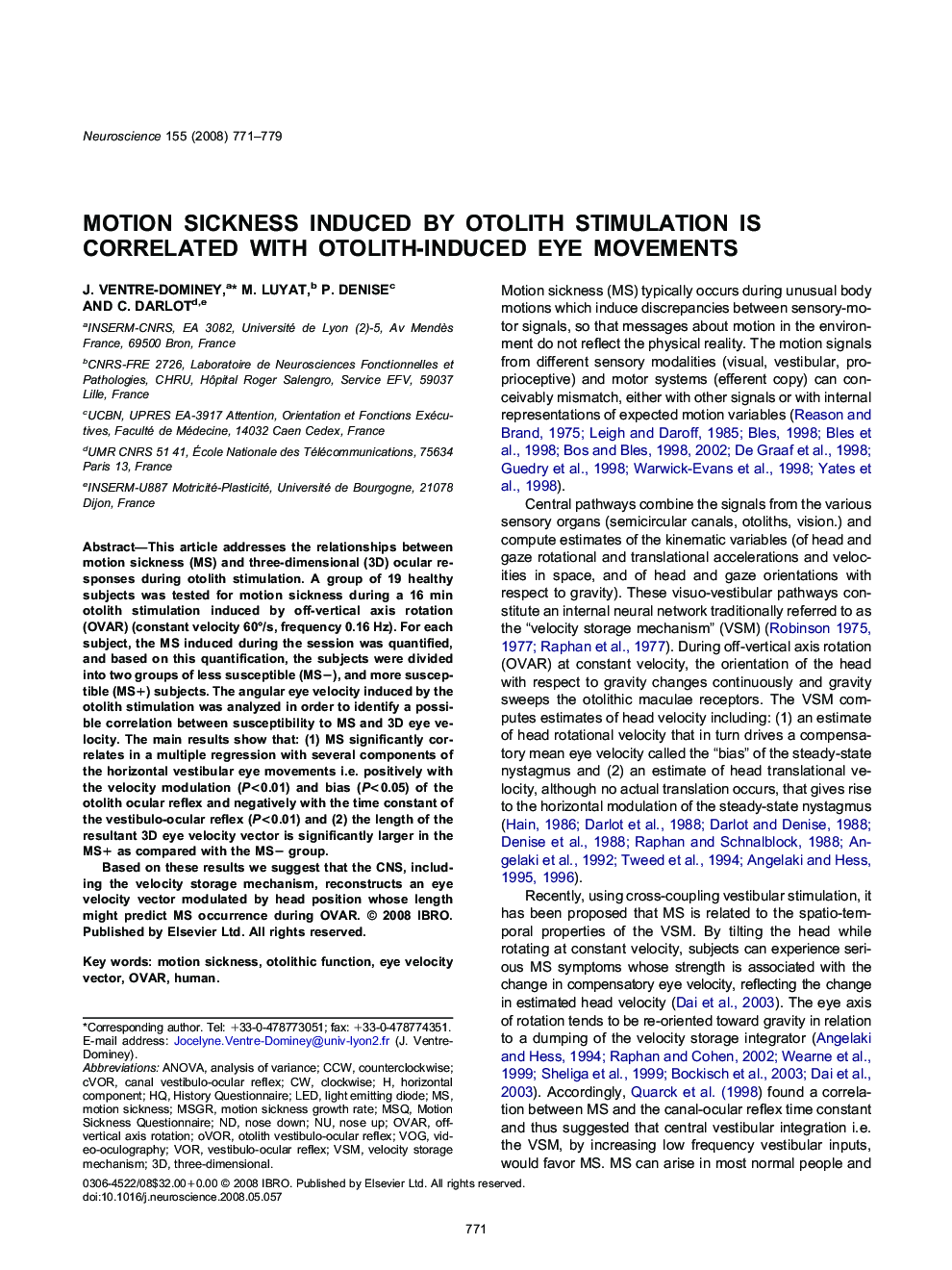| کد مقاله | کد نشریه | سال انتشار | مقاله انگلیسی | نسخه تمام متن |
|---|---|---|---|---|
| 4340728 | 1295808 | 2008 | 9 صفحه PDF | دانلود رایگان |

This article addresses the relationships between motion sickness (MS) and three-dimensional (3D) ocular responses during otolith stimulation. A group of 19 healthy subjects was tested for motion sickness during a 16 min otolith stimulation induced by off-vertical axis rotation (OVAR) (constant velocity 60°/s, frequency 0.16 Hz). For each subject, the MS induced during the session was quantified, and based on this quantification, the subjects were divided into two groups of less susceptible (MS−), and more susceptible (MS+) subjects. The angular eye velocity induced by the otolith stimulation was analyzed in order to identify a possible correlation between susceptibility to MS and 3D eye velocity. The main results show that: (1) MS significantly correlates in a multiple regression with several components of the horizontal vestibular eye movements i.e. positively with the velocity modulation (P<0.01) and bias (P<0.05) of the otolith ocular reflex and negatively with the time constant of the vestibulo-ocular reflex (P<0.01) and (2) the length of the resultant 3D eye velocity vector is significantly larger in the MS+ as compared with the MS− group.Based on these results we suggest that the CNS, including the velocity storage mechanism, reconstructs an eye velocity vector modulated by head position whose length might predict MS occurrence during OVAR.
Journal: Neuroscience - Volume 155, Issue 3, 26 August 2008, Pages 771–779